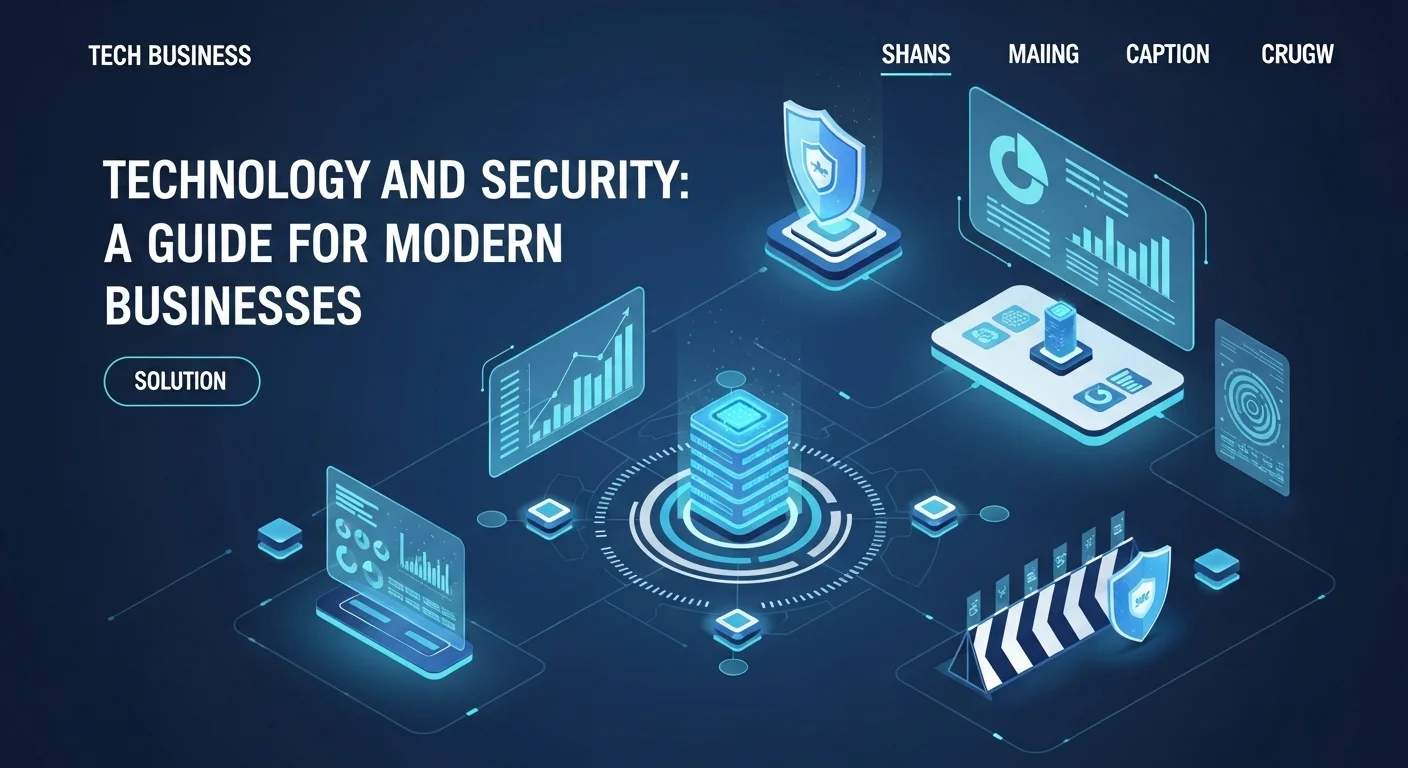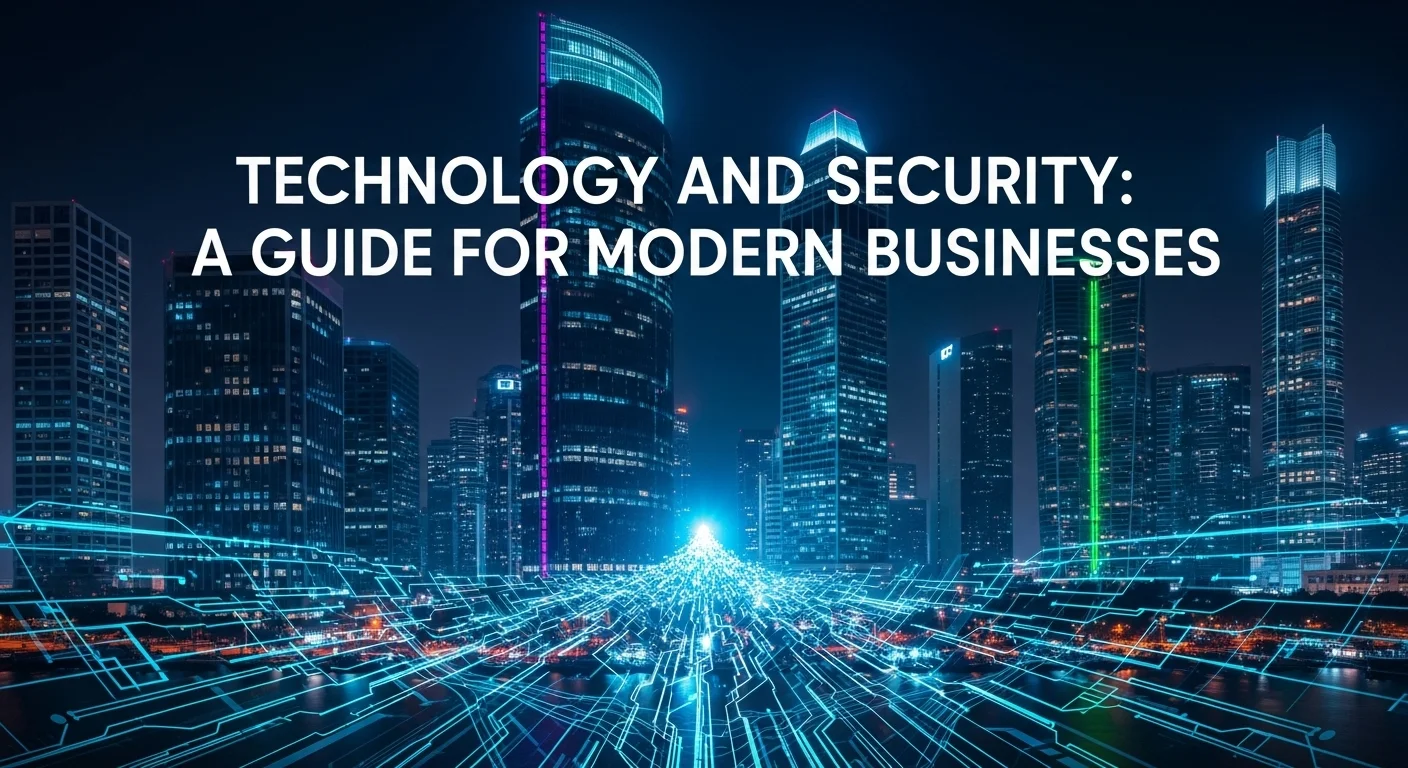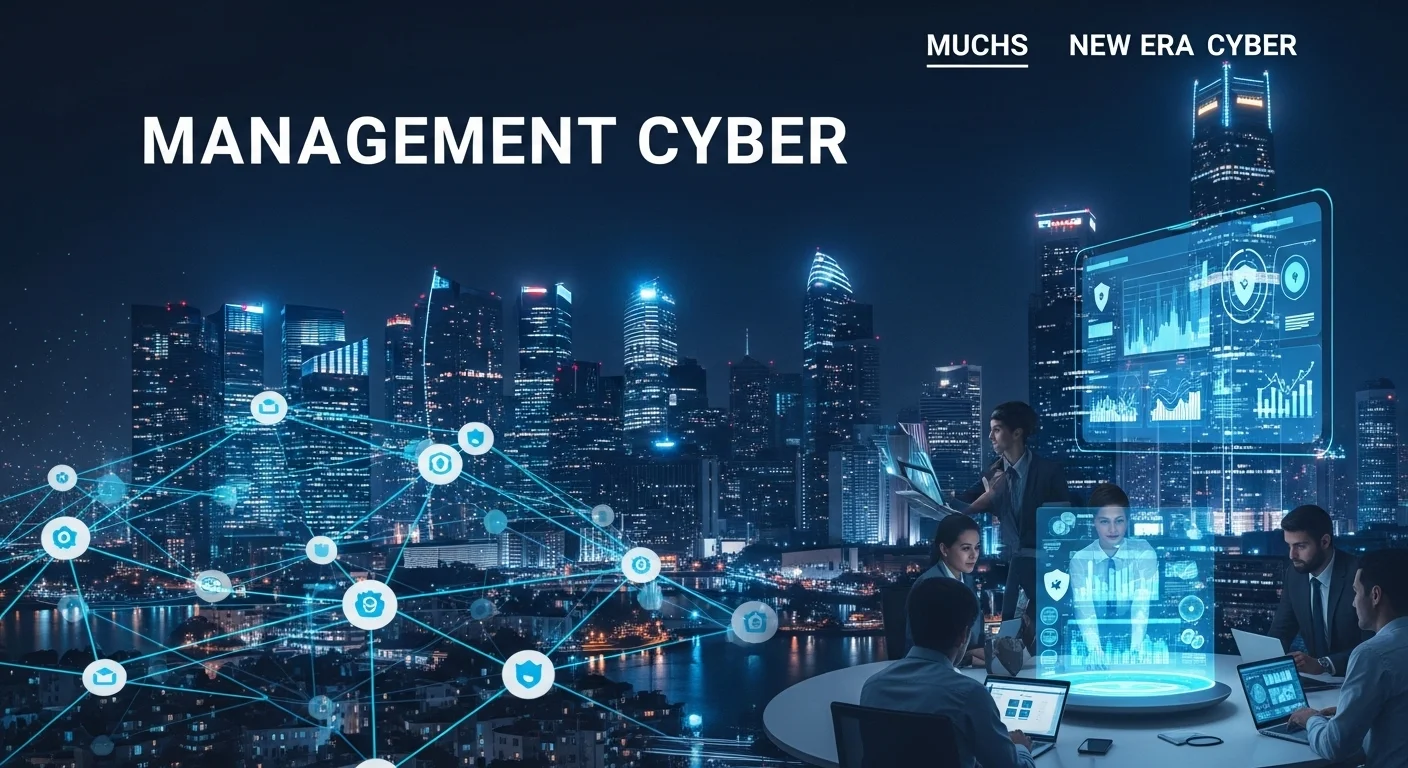Navigating the Digital Maze: A Real-World Guide to Tech Security for Your Business

Executive Summary
I've spent over fifteen years helping businesses, from small startups to established companies, navigate the often-confusing world of technology and security. It's a landscape that changes daily, and I know that keeping up can feel overwhelming. That's why I wrote this guide—to give you a clear, human-friendly roadmap. We'll break down what cybersecurity really means today and why it's a cornerstone of modern business. We'll explore the real threats you face and the smart ways to defend your digital assets, whether it's your corporate network or your smart home. I'll share my experience on how to find the right IT security partners, manage your defenses effectively, and understand specialized systems like collaborative defense from IronNet or government-vetted HACS services. My goal is to equip you with the confidence and knowledge to build a security posture that doesn't just protect you, but empowers you to grow.
Table of Contents
Table of Contents
What is Security and Why is it So Important in Tech?
In our digital world, 'Security' has grown from locking doors to protecting our entire virtual existence. When we talk about security in technology, we're really talking about cybersecurity: the practice of defending our computers, networks, and data from digital attacks. Think of it as the digital bodyguard for your business and personal life. These attacks are designed to access, change, or destroy sensitive information, extort money, or simply throw a wrench in your daily operations. I can't overstate how crucial this is. For a business, a security breach can be devastating, leading to huge financial losses, a damaged reputation you can't easily repair, and serious legal trouble. For you and me, it could mean identity theft or financial fraud. The digital world is built on trust, and good security is the foundation of that trust.
Technology is always evolving with exciting innovations like Artificial Intelligence (AI), the Internet of Things (IoT), and cloud computing. But with every step forward, new vulnerabilities appear. I've seen it time and again: every new app, every new device connected to the internet, expands the potential entry points for an attacker. This has turned cybersecurity into a constant arms race. The attackers get smarter, using automation and AI to launch sophisticated attacks. This means we, the defenders, have to be just as innovative, using advanced technology and proactive strategies to stay one step ahead.
Why Your Business Can't Afford to Ignore Security
For any business today, big or small, investing in solid security isn't just a good idea—it's essential for survival. Your most valuable assets, like customer data, financial records, and internal strategies, are all digital. Failing to protect them is a risk you can't afford to take. This is where getting professional IT security help and having solid IT security management come into play. Professional IT security services are offered by expert firms that help you protect your digital world. This can be anything from a one-time security check-up to having a team of experts monitor your systems 24/7. Partnering with these pros gives you access to top-tier expertise without the massive cost of building an in-house team. Effective IT security management is your internal game plan—the policies and procedures you establish to manage risk. It's about creating a culture where everyone understands their role in keeping the company safe. Without this management framework, even the best technology can fail due to a simple human error.
Specialized Security for Our Connected World
Our security concerns now extend far beyond the office. With the rise of the smart home, our thermostats, cameras, and locks are all online, creating a convenient but vulnerable ecosystem. A system like Savant home security integrates these devices beautifully, but it also creates a central point for attackers to target. Securing a smart home requires a layered defense: strong passwords, regular software updates, and segmenting your network to keep critical devices isolated. Protecting your smart home isn't just about data; it's about your family's physical safety and privacy.
On a bigger scale, the interconnectedness of modern business requires a collaborative defense. This is the whole idea behind platforms like IronNet, which champions a 'Collective Defense' model. It's like a neighborhood watch for companies. When one member spots a new threat, that information is shared anonymously with everyone else in the network in real-time. This collective intelligence gives everyone an early warning, allowing them to block an attack before it hits. I've seen this model work wonders against sophisticated, well-funded attackers because it pools the resources and insights of many into a powerful, unified shield.
For organizations in sensitive sectors like government or critical infrastructure, the security bar is set even higher. This led to the creation of programs like the GSA's Highly Adaptive Cybersecurity Services (HACS). When you work with HACS security services, you're hiring vendors who have been thoroughly vetted by the U.S. government for their technical skill and reliability. This streamlines the process of finding top-quality help for critical tasks like risk assessments, penetration testing, and incident response. The existence of frameworks like HACS shows just how serious high-level security is for protecting a nation's most vital functions. The future of security lies in integrating these layers—from our personal devices to collective defense networks—to create a comprehensive shield for our digital lives.
The rise of AI is a double-edged sword in this fight. Attackers use it to create smarter malware, but we defenders use AI to revolutionize threat detection. AI-powered security tools can sift through immense amounts of data to spot subtle patterns that signal an attack, something a human could easily miss. Machine learning can establish a baseline of your network's normal behavior and instantly flag anything unusual, helping to catch brand-new attacks. It's a fundamental shift in how we approach digital defense, making AI a non-negotiable part of modern IT security management.

A Practical Guide to Security Solutions for Your Business
Navigating the complex world of tech security requires a clear understanding of the threats and the tools available to fight them. A strong security strategy isn't a one-size-fits-all product you can buy off the shelf; it has to be tailored to your business's specific risks and goals. In my experience, the most successful security plans are built on a solid foundation of knowledge. This guide will walk you through the methods, techniques, and resources you need to build a resilient defense.
Understanding the Digital Threats You Face
Before you can build your defenses, you have to know what you're up against. The threat landscape is always changing, but most attacks fall into a few common categories:
- Malware: This is the catch-all term for malicious software like viruses, spyware, and ransomware. Ransomware is a particularly nasty variant I've seen cripple businesses by locking up their files and demanding a hefty payment to get them back.
- Phishing: This is a psychological trick. Attackers send emails or messages that look legitimate—like they're from your bank or a colleague—to fool you into giving up passwords or financial details. It's one of the most common and effective attack methods.
- Denial-of-Service (DoS/DDoS) Attacks: Think of this as a digital traffic jam. Attackers flood your website or network with so much junk traffic that legitimate users can't get through. It’s a brute-force way to take you offline.
- Man-in-the-Middle (MitM) Attacks: Here, an attacker secretly positions themselves between you and a service you're using, like your online banking. They can intercept, read, and even alter your communications without you ever knowing.
- Zero-Day Exploits: This is an attack that targets a brand-new vulnerability in software that no one, not even the developer, knows about yet. Because there's no patch, these can be incredibly dangerous.
A thorough risk assessment is the first step. It helps you figure out what your most important digital assets are and which threats are most likely to target them, so you can invest your resources wisely.
Core Principles of Modern Security Strategy
A few core principles guide nearly all effective security strategies today. The most important one I preach is the Zero Trust model. The old way was 'trust but verify'—if someone was inside your network, they were generally trusted. Zero Trust flips that on its head to 'never trust, always verify.' It assumes that threats could be anywhere, both inside and outside your network. Every single request for access must be strictly authenticated and authorized. This is perfect for today's world where our data is in the cloud and our teams work from everywhere.
Another key concept is defense-in-depth. It's a simple but powerful idea: build your security in layers. If one layer fails—and someday, one will—another layer is there to stop the attack. A typical strategy might include a firewall, intrusion detection systems, endpoint protection on every computer, and data encryption. This layered approach is a cornerstone of good IT security management, creating a tough, resilient system.
Choosing the Right Security Solutions
With so many security products out there, choosing the right ones can be overwhelming. The secret is to align your choices with your specific needs. For many small and medium-sized businesses I've worked with, partnering with an IT security services provider is the smartest move. These experts can offer everything from basic antivirus management to advanced threat hunting, acting as an extension of your team and giving you 24/7 peace of mind.
When you're evaluating solutions, don't just look at features. Think about how they'll integrate with what you already have. A bunch of separate tools that don't talk to each other can create dangerous blind spots. A unified platform that brings everything into a single view, often called Extended Detection and Response (XDR), can give you much better visibility and control. For specific needs, you'll want specialized solutions. If you're setting up a smart home, a system like Savant home security offers integrated control, but its safety relies on securing every device connected to it. For bigger challenges, a collaborative platform like IronNet allows you to pool threat intelligence with other companies, creating a stronger defense for everyone. And if you're working with sensitive government data, using pre-vetted HACS security services ensures you're meeting a high standard of quality and compliance. Your choices should always be driven by a clear understanding of your risks.
A critical decision many businesses face is whether to build an in-house security team or outsource to a managed service provider (MSSP). An in-house team offers total control, but it's a huge investment in people and technology, and finding the right talent is incredibly difficult. An MSSP offers expert help at a predictable cost. In my experience, a hybrid model often works best: your internal team handles strategy while the MSSP manages the 24/7 monitoring and response. This is a key part of effective IT security management that you should revisit as your business evolves.

Actionable Tips & Strategies to Improve Your Tech Security
Ultimately, great security isn't just about the technology you buy; it's about building a security-conscious culture and adopting smart habits. From my years in the field, I can tell you that a proactive and strategic approach not only protects you from threats but also builds the trust and confidence you need to succeed. Here are some actionable tips for both businesses and individuals to immediately improve their security posture.
Best Practices for Businesses
Creating a secure environment for your business is a team effort. It requires the right blend of technology, policy, and education. Here are the practices I always recommend:
- Develop a Clear Security Policy: This is your rulebook. A comprehensive policy should outline everything from acceptable internet use to how to handle sensitive data and respond to a breach. It’s the foundation of effective IT security management and should be a living document you update regularly.
- Implement Strong Access Controls: Enforce the 'principle of least privilege.' This means employees should only have access to the information and systems they absolutely need to do their jobs. Pair this with multi-factor authentication (MFA)—it's one of the single most effective controls you can implement.
- Train Your People: Your employees are your first line of defense, but they can also be your biggest vulnerability. Regular, engaging security awareness training is crucial. Teach them how to spot phishing emails and other social engineering tricks. Run simulations to keep them sharp.
- Stay on Top of Updates: Attackers love to exploit known vulnerabilities in outdated software. A solid patch management program ensures that security updates are applied quickly, closing the door on these easy targets. Automate this wherever you can.
- Have an Incident Response Plan (and Test It): It’s not a matter of *if* you'll face a security incident, but *when*. A clear plan that details who does what during a crisis is essential. And don't just write it and forget it—test it with drills to make sure it actually works.
- Conduct Regular Security Assessments: Your security needs will change over time. Regularly scan for vulnerabilities and consider hiring professionals for penetration testing to find weak spots before attackers do. For critical operations, using specialized HACS security services provides a government-vetted level of assurance.
Enhancing Your Personal and Home Security
Good security habits aren't just for the office. The same principles can protect you and your family at home. Here are some simple tips:
- Use Strong, Unique Passwords: This is basic, but so many people get it wrong. Use a different, complex password for every online account. A password manager is an absolute must-have tool to make this easy.
- Enable Multi-Factor Authentication (MFA): Turn on MFA everywhere you can—for your email, social media, and banking apps. It’s a simple step that makes it exponentially harder for someone to break into your accounts.
- Be Skeptical of Scams: Treat unsolicited messages with suspicion. Don't click on strange links or open unexpected attachments. If a message seems urgent or too good to be true, it probably is.
- Secure Your Home Wi-Fi: Change the default password on your router immediately. Use strong WPA3 encryption and create a separate guest network for visitors so their devices are kept separate from yours.
- Keep Your Devices Updated: Just like at work, keep the software on your computers, phones, and smart devices updated to get the latest security patches.
- Lock Down Your Smart Home: For integrated systems like Savant home security, make sure you're using the latest firmware. Research the security of any new smart device before you buy it, and always change the default password during setup.
Leveraging Advanced Tools and Expert Services
For those who want to take their security to the next level, advanced tools and services can make a huge difference. For a business, this might mean investing in a SIEM (Security Information and Event Management) system to get real-time analysis of security alerts. It could also mean joining a collective defense ecosystem like the one offered by IronNet. I'm a big believer in this approach because it turns security from a solo fight into a team sport, helping everyone stop attacks faster. For a deeper dive into building a security-first culture, this article from Harvard Business Review offers great insights. In the end, a proactive, layered, and continuously improving approach is your best strategy for navigating the digital world safely and with confidence.
Expert Reviews & Testimonials
Sarah Johnson, Business Owner ⭐⭐⭐
As a business owner, I found the information on security accurate. I would have loved to see a few more practical, real-world examples for small businesses like mine.
Mike Chen, IT Consultant ⭐⭐⭐⭐
A solid overview of tech security. It clarified a lot for me, though some of the more technical concepts could be broken down even further for easier understanding.
Emma Davis, Tech Expert ⭐⭐⭐⭐⭐
Fantastic and comprehensive article on security! As someone specializing in tech, this was incredibly helpful and clearly explained. A must-read.



